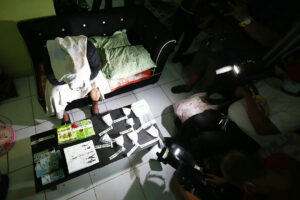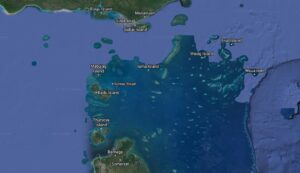Philippine strategic environment for corporate planning

(Part 1)
President Ferdinand Marcos, Jr. recently signed an executive order adopting the Philippine Development Plan (PDP) 2023-2028 which can be a guideline for both the public and private sectors to help the Philippines achieve the goal of becoming an upper middle-income economy by 2025 and over the longer term lay the foundation for First World economic status 15 to 20 years from now. In a recent event sponsored by the American Chamber of Commerce of the Philippines, I was privileged to listen to a detailed presentation of this PDP from Undersecretary Rosemarie Edillon. There were two other speakers who complemented the very valuable information presented by the Undersecretary. These were Dante Tinga, Jr., Senior Vice-President and Director for Research, Investor Relations and Corporate Planning Group, BDO Unibank, Inc. and Dr. Ragnar Gudmundsson, Resident Representative of the International Monetary Fund in the Philippines. The wealth of information and insights presented by these three distinguished speakers prompted me to write this series of articles to help executives and managers of both the private and government sectors in their very important task of strategic, operational and project planning during the next three to five years, to coincide with the term of President Marcos, Jr.
Let me start with the vision-mission statement implied in the PDP. Although these statements are necessarily merely aspirational, they are still useful for focusing the attention of all members of Philippine society on what all should be trying to achieve as long-term goals. I abbreviate the vision contained in the now popular “Ambisyon Natin 2040” of the National Economic and Development Authority (NEDA) into “attaining First World status by the decade of 2040 to 2050.” The eight-point agenda presented by President Marcos Jr. in his inaugural State of the Nation Address in July 2022 can be reduced to the overall goal of reinvigorating job creation and accelerating poverty reduction by steering the economy back on the high-growth path and, more importantly, effecting economic and social transformation for a prosperous, inclusive and resilient society.
What are the characteristics of a First World economy that we want to achieve some 20 years from now? The answers given in the PDP, as summarized by Ms. Edillon are: 1.) High-trust society with pro-active, smart and innovative people with high regard to quality of life, inclusive opportunities, continuous human development and innovative thinking; 2.) an economic sector that is competitive and globally connected; resilient, technology-enabled and agile; provides opportunities for all through innovation and entrepreneurship; 3.) Institutions that are collaborative, responsive, reliable and efficient, thus providing the needed services that are trustworthy, safe and secure; 4.) A physical environment that is efficient, clean and sustainable, in which resources are utilized to optimum levels without compromising balanced and healthful ecology for present and future generations.
In the process of transforming the Philippines, six items are envisioned. The first is digitalization. Every sector of the economy can improve its productivity through the use of digital technology as Industrial Revolution 4.0 intensifies. Artificial Intelligence, the Internet of Things, Data analytics and robotization can be increasingly applied to agriculture, industry and services, including the whole gamut of services that the government provides to the population. The second item is called “servicification.” Especially in an economy like that of the Philippines where services account for close to 70% of GDP, services play an increasingly important role in increasing income, creating employment, productivity improvement, investment and trade. Indeed, manufacturing activities and competitiveness increasingly depend on services. This is the phenomenon called servicification. Services are also crucial for achieving the 2030 Sustainable Goals. As we read in publications of the United Nations Conference on Trade and Development (UNCTAD), strengthening the domestic services sector by increasing its backward and forward linkage with agriculture and industry, as well as its linkage with trade, can be an effective component of comprehensive development strategy. For an emerging market like the Philippines, service trade is the new frontier for enhancing their participation in international trade and, in turn, realizing its development gains. Moreover, as services trade demonstrated relative resilience in the latest financial and economic crises (including that which resulted from the COVID-19 pandemic), this creates additional incentives for countries to incorporate services trade into their national trade and growth strategies. This is more than evident in the case of the phenomenal growth of the BPO-IT sector that is projected to earn $50 billion and employ 2 million skilled workers in the next five years.
The other four items are Dynamic Innovation Ecosystem, Enhanced Connectivity, Greater Collaboration between Local and National Government, and Partnership with the Private Sector. Innovation is especially of great importance in the agricultural sector which is the Achilles heel of the entire economy, having suffered negative growth over the last three years. All efforts must be exerted to attain an average of at least 2% to 3% annually in this sector during the present administration. This can be reasonably achieved through the innovation of consolidation of small farm units, diversification of products especially into high-value food items for both domestic consumption and exports, digitalization, and industrialization (the processing of raw materials into finished products like cacao into chocolate candies).
Enhanced connectivity is now more within reach with the opening of the telecom sector to 100% foreign direct investments. There are some megaprojects in the telecom sector, like the submarine cable connecting the US to Pagudpud, Ilocos Norte that Amazon and Meta are building that will be a game changer in significantly improving connectivity that can transform a city like Laoag into a major venue for data centers. The Mandanas-Garcia ruling can lead to the LGUs playing a greater role in implementing the development goals as they utilize their increased share of national tax revenues in development projects. Finally, the intensification of Public-Private Partnership (PPP) ventures can unlock vast amounts of foreign capital, especially through the instrumentality of the proposed Maharlika Investment Fund which can be tweaked to become a Philippine Long-Term Investment Fund that will address the serious shortage of long-term capital in the Philippines resulting from the low savings rate of only 9-10% of GDP (as contrasted with the average in the East Asian region of 25-35%) and the existing very high debt-to-GDP ratio of the economy of more than 60% as the government was forced to borrow billions of pesos to address the pandemic.
(To be continued.)
Bernardo M. Villegas has a Ph.D. in Economics from Harvard, is professor emeritus at the University of Asia and the Pacific, and a visiting professor at the IESE Business School in Barcelona, Spain. He was a member of the 1986 Constitutional Commission.




